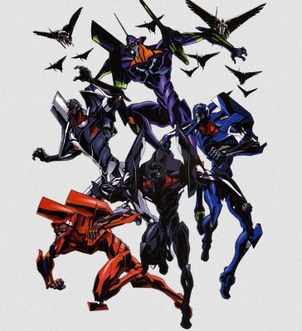
The Evangelions, also referred to as Evas, are fictional biomechanical humanoid mechas introduced in the anime television series Neon Genesis Evangelion, produced by Gainax and directed by Hideaki Anno, and in the manga of the same name written and illustrated by Yoshiyuki Sadamoto. In addition to the original animated series, Evangelions appear in its derivative works, including spin-off manga, video games, visual novels, the original video animation Petit Eva: Evangelion@School, and in the Rebuild of Evangelion movies, with considerably different roles and guises.

Asuka Langley Soryu is a fictional character from the Neon Genesis Evangelion franchise created by Gainax. She first appears in the original anime series, and also appears in the franchise's animated feature films and related media, including video games, the Rebuild of Evangelion films, and the manga adaptation by Yoshiyuki Sadamoto. In Japanese, Yūko Miyamura voices Asuka in all her animated appearances and merchandise. In English, Tiffany Grant voices her in the ADV Films dub and Stephanie McKeon voices her in the Netflix dub.
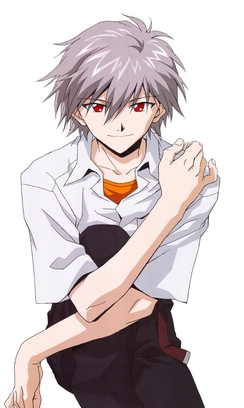
Kaworu Nagisa, real name Tabris, is a fictional character from the Neon Genesis Evangelion franchise created by Gainax. In the series, he is the pilot of a giant mecha named Evangelion Unit 02 for the special agency Nerv. Kaworu is the seventeenth and final member of the Angels which threaten humanity. When he arrives at Nerv, he meets Eva-01 pilot Shinji Ikari, showing great affection towards him. After revealing his nature as an Angel to Shinji, he asks him to kill him to allow humanity to survive. Kaworu appears in the franchise's animated feature films and related media, video games, the original net animation Petit Eva: Evangelion@School, the Rebuild of Evangelion films, and the manga adaptation by Yoshiyuki Sadamoto. He also has a prominent role in Evangelion: 3.0 You Can (Not) Redo, the third film of the Rebuild saga.

The End of Evangelion is a 1997 Japanese anime apocalyptic science fiction film written by Hideaki Anno, directed by Anno and Kazuya Tsurumaki, and animated by Gainax and Production I.G. It serves as an ending to the television series Neon Genesis Evangelion, which aired from 1995 to 1996 and whose final two episodes were controversial for their atypically abstract direction.

"The Cruel Angel's Thesis", also known as "A Cruel Angel's Thesis", is a J-pop song performed by Japanese singer Yoko Takahashi. Toshiyuki Ōmori and Hidetoshi Satō composed the song, while Neko Oikawa wrote the lyrics. It was written for the opening theme of the anime television series Neon Genesis Evangelion, and was released as a double-A-sided single with "Fly Me to the Moon", the show's closing theme, on October 25, 1995. "The Cruel Angel's Thesis" was also included in the series' soundtrack releases and Takahashi's albums.

Tsundere is a Japanese term for a character development process that depicts a character with an initially harsh personality who gradually reveals a warmer, friendlier side over time.
The following is a glossary of terms that are specific to anime and manga. Anime includes animated series, films and videos, while manga includes graphic novels, drawings and related artwork.

Asuka (あすか), formerly Monthly Asuka, is a bimonthly Japanese shōjo manga magazine published by Kadokawa Shoten. The magazine was established in 1985. It is released on the 24th of every odd-numbered month as of May 2021. Much like its sibling publication Shōnen Ace, it places some emphasis on anime tie-ins and spinoffs. Manga serialized in Asuka are published in tankōbon format under the Asuka Comics imprint.

Rebuild of Evangelion, known in Japan and on Amazon Prime Video as Evangelion: New Theatrical Edition, is a Japanese animated film series and a retelling of the original Neon Genesis Evangelion anime television series, produced by Studio Khara. Hideaki Anno served as the writer and general manager of the project, with Kazuya Tsurumaki, Masayuki, Mahiro Maeda and Katsuichi Nakayama directing the films themselves. Yoshiyuki Sadamoto, Ikuto Yamashita and Shirō Sagisu returned to provide character designs, mechanical designs and music respectively.
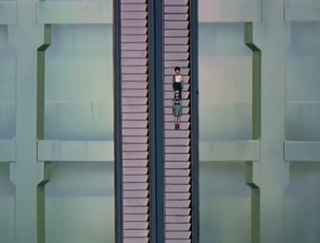
"Rei I", also known by the Japanese title "Rei, Beyond the Heart", is the fifth episode of the anime Neon Genesis Evangelion, which was created by Gainax. "Rei I" was written by Hideaki Anno and Akio Satsukawa, and directed by Keiichi Sugiyama. It was first broadcast on TV Tokyo on November 1, 1995. The series is set fifteen years after a worldwide cataclysm named Second Impact, mostly in the futuristic, fortified city called Tokyo-3. The episode's protagonist is Shinji Ikari, a teenage boy who is recruited by his father Gendo into the organization Nerv to pilot a giant bio-machine mecha named Evangelion to combat certain beings called Angels. In the episode, Shinji tries, but fails, to connect with Rei Ayanami, a fellow pilot, who is close to his distant and cold father Gendo.
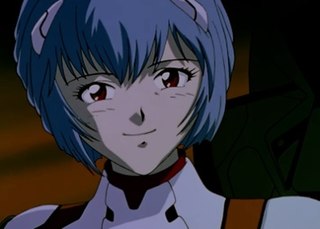
"Rei II", also known by the Japanese title "Showdown in Tokyo-3", is the sixth episode of the anime Neon Genesis Evangelion, which was created by Gainax. "Rei II" was written by Hideaki Anno and Akio Satsukawa and directed by Hiroyuki Ishido. The series is set fifteen years after a worldwide cataclysm named Second Impact, and is mostly set in the futuristic, fortified fictional city of Tokyo-3. The episode's protagonist is teenage boy Shinji Ikari, who is recruited by his father Gendo to the organization Nerv to pilot a bio-machine mecha named Evangelion against beings called Angels. In the episode, Shinji must annihilate the fifth Angel Ramiel, who is able to destroy every enemy in its vicinity with an accelerated particles cannon. A plan called Operation Yashima is worked out, which involves Shinji shooting Ramiel from a distance with a Positron Rifle.
Seiji Mizushima is a Japanese anime director who is known for such series as Shaman King, Fullmetal Alchemist, Mobile Suit Gundam 00, Un-Go, Concrete Revolutio, and Beatless. His first directorial film project, Fullmetal Alchemist the Movie: Conqueror of Shamballa, won the 60th Mainichi Film Award for Best Animation Film. In 2015, he won the Individual Award at the 20th Animation Kobe Awards.

Evangelion: 1.0 You Are (Not) Alone. is a 2007 Japanese animated science fiction action film, written and chiefly directed by Hideaki Anno. It is the first installment of the Rebuild of Evangelion tetralogy, based on the anime television series Neon Genesis Evangelion. The story, which is set in the futuristic city of Tokyo-3 fifteen years after a planetary catastrophe known as the Second Impact, focuses on Shinji Ikari, a boy who is recruited by the special agency Nerv to pilot a giant mecha known as an Eva unit and fight, along with fellow pilot Rei Ayanami, against a mysterious species named Angels. The film features the same cast of voice actors from the original series, including Megumi Ogata as Shinji, Megumi Hayashibara as Rei, and Kotono Mitsuishi as Misato Katsuragi.
Mari Illustrious Makinami or Maria Iscariot is a fictional character in the anime film tetralogy Rebuild of Evangelion, based on the television series Neon Genesis Evangelion and introduced in the film Evangelion: 2.0 You Can (Not) Advance (2009). Mari is a pilot for the European branch of the special agency Nerv, founded to counter enemies of humankind known as the Angels. She first appears aboard the mecha Evangelion Unit 05, before fighting on Evangelion Unit 02 in place of Asuka Langley Shikinami. Brave and tenacious on the battlefield, Mari is friendly, lighthearted and humorous with her colleagues. She is originally voiced by Maaya Sakamoto; in the English-language version, she is voiced by Trina Nishimura and Deneen Melody. Besides the Rebuild of Evangelion films, Mari appears in an extra chapter of the Neon Genesis Evangelion manga, written and illustrated by Yoshiyuki Sadamoto, and in several video games.
The soundtracks of Neon Genesis Evangelion were produced for the 1995 anime series of the same name and its sequels, remakes and spinoffs. Shiro Sagisu composed the tracks under the direction of Hideaki Anno, director of the series. In addition to Sagisu's compositions, the soundtracks include pieces by Masami Okui, Kotono Mitsuishi and a wide repertoire of classical music, including symphonies by Beethoven, Bach, Giuseppe Verdi and other composers. Under the direction of Toshimichi Ōtsuki, a representative of King Records and one of the producers of the series, "A Cruel Angel's Thesis" was composed as the series' opening theme song. The series used "Fly Me to the Moon", originally written by Bart Howard, as the closing theme song. Different versions of the song were recorded by British singer Claire Littley, Yoko Takahashi and the anime's main female voice actors, Megumi Hayashibara, Kotono Mitsuishi and Yuko Miyamura.
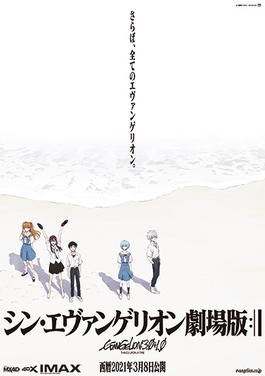
Evangelion: 3.0+1.0 Thrice Upon a Time is a 2021 Japanese animated epic psychological science fiction action film co-directed, written and produced by Hideaki Anno. Produced by Studio Khara, it is the fourth and final film in the Rebuild of Evangelion film series, part of the Neon Genesis Evangelion franchise.
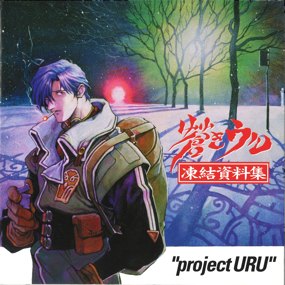
Uru in Blue, also known as Blue Uru, is an unproduced Japanese animated science fiction film project by Gainax intended as a sequel to their 1987 film Royal Space Force: The Wings of Honnêamise. Aoki Uru was originally planned to be directed by Hideaki Anno and scripted by Hiroyuki Yamaga, with Yoshiyuki Sadamoto serving as its chief animation director and character designer. During 1992–93, the Aoki Uru creative team produced a complete storyboard, a partial script, and a large collection of designs and pre-production art for the film; however, the project had been initiated without a secured budget, and its development occurred within a period of personal, financial, and managerial crises at Gainax that contributed to the indefinite suspension of work on Aoki Uru in July 1993.

Kyoei Toshi, known in English as City Shrouded in Shadow, is a 2017 survival video game developed by Granzella and published by Bandai Namco Entertainment for the PlayStation 4. The objective of the game is to escape a city ravaged by battles between monsters, robots, and heroes from the Japanese kaiju and tokusatsu franchises Godzilla, Ultraman, Gamera, Patlabor, and Neon Genesis Evangelion.
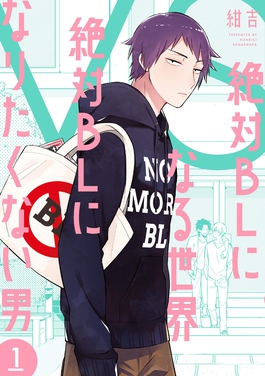
A Man Who Defies the World of BL is a Japanese manga series by Konkichi. Zettai BL ni Naru Sekai VS Zettai BL ni Naritakunai Otoko is serialized digitally in Pixiv Comic and the manga mobile app Manga Jam since November 7, 2018.


















